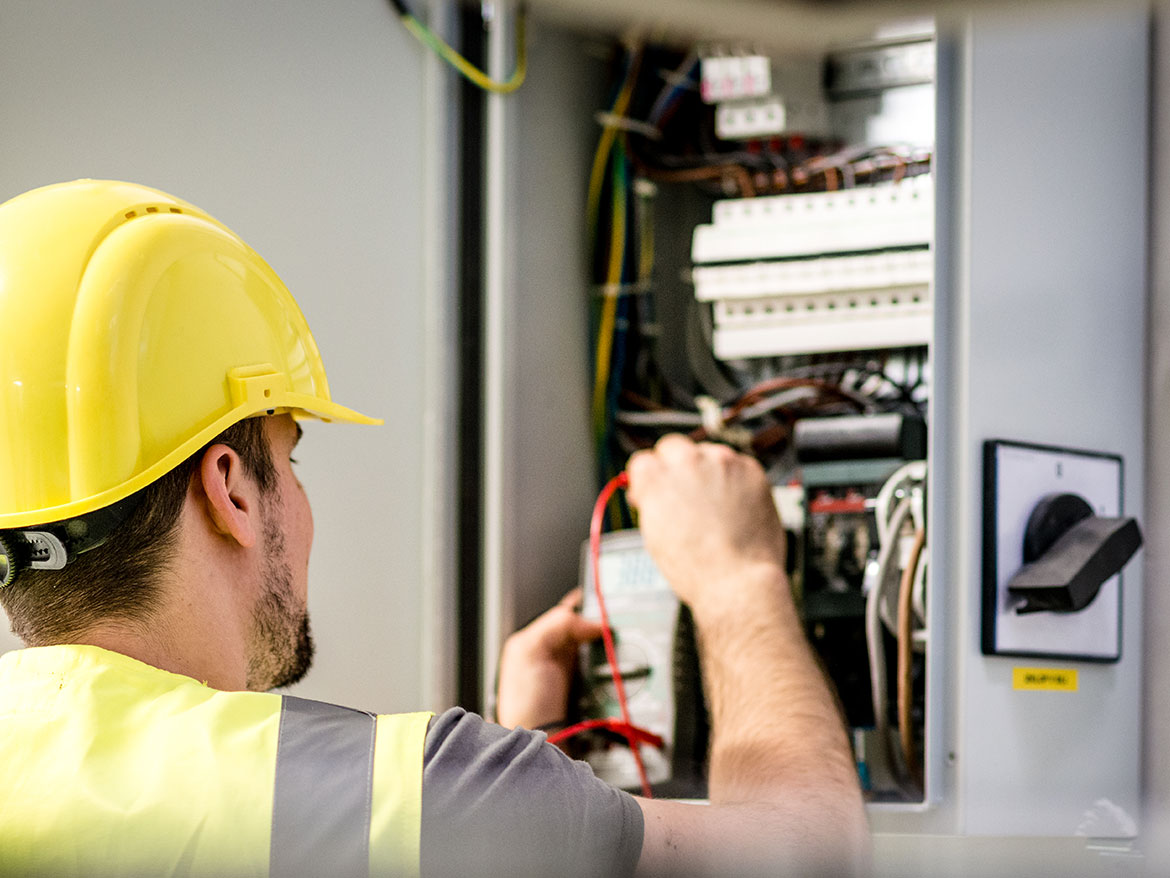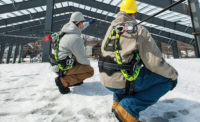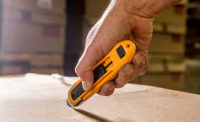HVAC installation, maintenance and repair are crucial tasks. They can also be dangerous, so workers in the industry must be aware of all the hazards they may face.
According to the Bureau of Labor Statistics, HVAC technicians have one of the highest injury rates of any profession. The first step in reducing that figure is learning what hazards pose the biggest threat. Here are 10 common HVAC safety hazards you should know.
1. Electrical hazards
Electrical shocks are some of the most significant HVAC safety hazards. Heating and air conditioning systems often use high-voltage equipment, so live exposed wires and similar electrocution hazards pose a serious threat. Injuries resulting from these risks cause roughly 1,000 deaths annually and account for 5% of burn ward admissions.
The key to preventing these injuries is shutting off power to HVAC units before working on them. Technicians should also wear nonconductive gloves and test all circuits for lingering energy before touching them.
2. Hazardous chemicals
HVAC workers also frequently encounter hazardous chemicals. Refrigerants and fuels can emit toxic fumes, and some cleaners and solvents may cause burns or irritation if they get on your skin. Some systems may also involve pressurized gases, posing fire and explosive hazards.
Using the right PPE is the most important precaution for these risks. That includes safety glasses, work gloves, closed-toe shoes and — in some cases — face masks. Companies should also ensure they properly label all HVAC chemicals and follow regulatory guidelines for storing and disposing of them.
3. Asbestos
Asbestos is another common HVAC safety hazard. Many buildings built before the 1970s contain asbestos in their ductwork, insulation, paint and flooring. HVAC workers can inhale asbestos if these materials fray, potentially leading to lung cancer.
Field technicians should inspect all job sites for signs of asbestos, especially in older homes. If they think asbestos may be present, they should wear disposable outer protective clothing, gloves and respirators. After completing the job, employees should discard or disinfect this PPE and wash their hands to minimize exposure.
4. Respiratory hazards
Asbestos is the most prominent respiratory hazard HVAC workers face, but it’s not the only one. They may also encounter hazardous fumes from paints, carbon monoxide from furnaces and other airborne contaminants. While HVAC systems emitting dangerous levels of these toxins may be illegal in some areas, there is no federal HVAC code, so jobs in some states may present more hazards.
Workers should look into the specific HVAC system they’ll service before arriving to know what kinds of inhalation hazards they may face. Employees working in a basement or other confined space should wear respirators and promote airflow wherever possible.
5. Mechanical hazards
As with any job involving large pieces of equipment, HVAC installation and repair also poses mechanical hazards. Sharp metal edges can cause lacerations, and moving parts can pinch workers or snag their clothing. In some cases, employees may also use power tools with unique mechanical risks.
HVAC employees should always be aware of their surroundings, using ample light and minimizing noise to notice mechanical hazards. PPE like cut-resistant gloves and protective footwear will help, too. Workers should inspect power tools before use and follow the OEM’s guidelines for safe usage.
6. Falls from heights
Many HVAC technicians also work on roofs, which presents height-related hazards. Falls don’t have to be from remarkable heights to be deadly, and a lack of fall protection is the most common OSHA violation, so it’s important to address this risk.
Anyone working with ladders must maintain three points of contact with them at all times and secure this equipment before climbing. Workers should also always wear helmets and safety harnesses when working from heights.
7. Extreme temperatures
Extreme heat and cold are other common HVAC safety hazards. Heating equipment can run hot, and refrigerant can produce freeze hazards, especially if malfunctioning. Working in tight, confined spaces amplifies these risks.
Taking care around hot or cold equipment and using heat-resistant, insulated gloves will help prevent burns and freezes. Workers should also take frequent breaks and drink plenty of water to avoid overheating. Employees should wear warm clothing in colder months and take breaks in warmer indoor areas.
8. Fatigue
Fatigue is another common risk when dealing with heavily manual work. Workers can grow tired from crouching, moving, traveling between job sites and carrying equipment. That can lead to musculoskeletal injuries, overexertion or similar health risks.
Taking regular breaks is key to preventing fatigue. Employees must be careful not to skip meals and drink lots of water. Company leaders should consider limiting the number of jobs a subcontractor can take in a day to minimize these risks.
9. Road hazards
Because much HVAC work happens in the field, traffic-related hazards are also a concern. Reckless driving behavior, poor road conditions and vehicle malfunctions can endanger workers traveling between jobs.
The first step to addressing road hazards is keeping all company vehicles in good repair. Companies should also require employees to pass driving tests and use telematics devices to monitor their driving behavior to hold them accountable. Scheduling ample time between jobs to avoid rushing and keeping up to date on weather-related risks will also help.
10. Human error
As with any other job, human error is always an issue. According to some estimates, mistakes cause almost all workplace accidents, and factors like tiredness and cramped conditions can make them even more likely.
Thankfully, human error is also one of the most preventable hazards. Thorough training and recertification requirements will ensure HVAC technicians know all relevant best practices. Setting specific guidelines to follow for each job instead of leaving employees to come up with their own solutions will further minimize mistakes.
Stay safe from these HVAC safety hazards
Even the safest HVAC work involves some hazards. While you may not be able to eliminate some of these risks entirely, you can take steps to stay safe amid them.
Knowledge is the first step to better safety. HVAC contractors must be able to understand and spot these hazards. If they know what to look out for, they can work as safely as possible.




